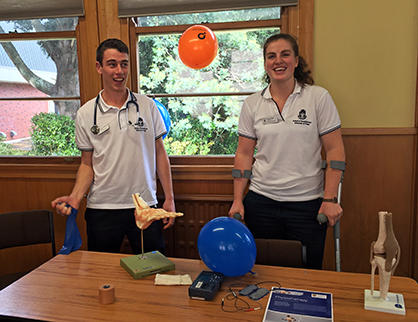For many students at the School of Physiotherapy, the fourth year means that clinical experience gained from earlier study gets put into 'real world' practice.
Each year, around one hundred and thirty aspiring physios complete four clinical papers and one research paper while working at a location somewhere in New Zealand.
 In doing so, students experience a diversity of places and people within a hospital and community setting, while those in our communities meet energetic and enthusiastic new physios.
In doing so, students experience a diversity of places and people within a hospital and community setting, while those in our communities meet energetic and enthusiastic new physios.
Clinical supervisors on site support their learning, and the School of Physiotherapy engages skilled clinical educators to help out. Such collaborations encourage individual students to make connections between theory and practice, as they operate across a wide range of environments with patients of all ages. Because physiotherapy involves close professional working relationships, this HUBS training activity reflects the nature of contemporary practice.
The experience can be demanding for some because the final location may not be the student's first choice. Yet, as a direct result of this often unanticipated opportunity, many young physios grow and learn in new and unexpected ways.
At times these placements lead to job offers in those towns and cities, particularly in more rural and remote parts of New Zealand.
Centres currently operate in Dunedin, Christchurch and Wellington.
Palmerston North, the Hawkes Bay and the Hutt Valley host Hubs of up to ten students each, and Mini Hubs, which engage up to five students now operate in Invercargill, Timaru, Whanganui and Nelson.
Publications
Lawrence, R. (2005). Branding terroir in the ′New World′: Modes of representation in the wine industry. In P. Sorrell, C. Ozcan, E. Kocabiyik & Z. T. Ultav (Eds.), Proceedings of the IST Product and Service Design Symposium and Exhibition on Agricultural Industries. Izmir, Turkey: Izmir University of Economics. [Full Paper] Conference Contribution - Published proceedings: Full paper